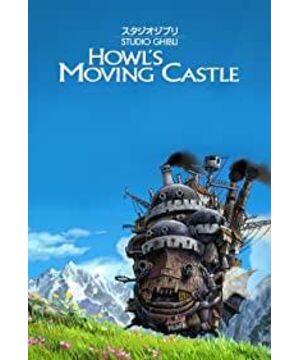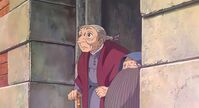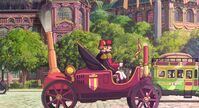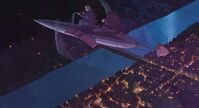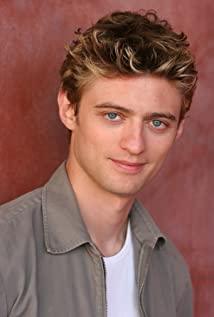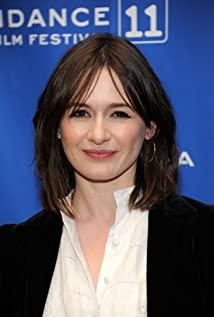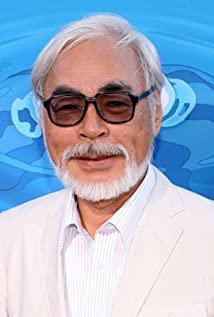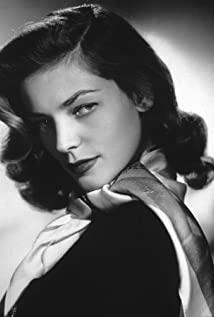(Contains a lot of spoilers and novel plot settings)
"Finally found you."
After more than ten years, when I looked back again, I finally understood this sentence.
Two days ago, on a whim, I turned out the original book and read it. The author is British children's fantasy author Diana W. Jones, graduated from Oxford University, studied under CS Lewis ("The Chronicles of Narnia") and JRR Tolkien ("The Lord of the Rings" "The Hobbit"). Unfortunately, because it is a random searched online translation, the writing is rough and chaotic, many places are unclear, and the reading experience is not good. It can only be considered that the plot context has been sorted out. In the future, if there is a chance to read the original English book, there are three Howl series, and the moving castle is only the first one.
The story takes place in the remote town of Qiping Town. Like the beginning of the movie, Howl's moving castle is wandering around in the suburbs. It is rumored that he will eat the girl's heart, and people are panicked for a while. In the novel, Sophie is the eldest of three sisters, inheriting the hat shop of her deceased father. Her stepmother, Fanny, was young and beautiful, and used to be an employee in a hat shop. The other two sisters also have their own beauty. Only Sophie is simple and low-key. She always hides in the house and sews hats, which looks a bit dull. She always said to herself, "No way, who calls herself the eldest daughter." What does the eldest daughter mean? Perhaps it is humility, sensibleness and sacrifice, and there is less room for coquettishness and willfulness.
Sophie in the novel has an unknowingly superb magical talent. She was able to turn blessings into reality, giving life to objects by speaking, such as when she was sewing a hat, she said to a creamy white broad-brimmed hat embroidered with roses: "You must be super rich", and the stepmother who owned the hat later married to a millionaire. She said to a caterpillar hat decorated with green feathers, "You are as young as spring leaves", so the mayor's wife who wore the hat became radiant, and the caterpillar hat became a best seller in the store. . She told an old-fashioned floppy hat, "You have a heart of gold, and one day a noble person will fall in love with you." An ugly girl who was ridiculed by the townspeople bought the hat and eventually eloped with the count. Lonely Sophie, always talking to herself in front of her hat, inadvertently gave many people a beautiful life. This setting is also buried in the movie. Sophie traveled back to the past and told the young Hal, "I am Sophie, waiting for me, waiting for me in the future." So Hal has been looking for Sophie, and they have them too. The first sentence when we met - "Finally found you."
Sophie, who understood everything, kissed Hal's face after walking out the door, and said, "I'm sorry, it's all my fault for making you wait for me for so long." No matter how many times she watched it, she would always cry here.
In the novel, there is no such bridge. The door of the black turntable leads to Hal's real home, Wales, where the writer Diana W. Jones grew up as a child. In the novel, Howl is a traveler, a Ph.D. who studies mysticism and semiotics. He came to this fantasy world because he learned the magic of traveling through time and space. In his original world, there were relatives such as his brother, sister-in-law, nephew and niece. In comparison, I prefer the setting in the movie, a simple hut with a waterwheel, grass and ponds that can't be seen, and a person's magic study. That boy was just as lonely as Sophie, who was talking to herself in the hat.
Hayao Miyazaki's films, to take the essence of the bleak, retain the bizarre imagination in the story, delete the evil conspiracy, and add more touching love and profound anti-war complex. In the novel, Howl is the soldier who accosted him at the beginning. When they met for the first time, he scared Sophie and ran away. The movie has originally created the classic section of "Heroes save beauty, walk in the air", and Hisaishi's soundtrack is even more amazing. Some people are curious about how the soundtrack of the film is created, is it based on the soundtrack of the picture, or is it edited according to the soundtrack? Hal grabbed Sophie and rushed to the sky for a moment, with a loud thud, and his clenched heart also trembled. Then the music slowly stretched out, Sophie slowly relaxed her limbs, and the audience also breathed a sigh of relief. Ordinary girl, who thought she would spend her whole life in a hat store unhappy, suddenly had this adventure, no wonder her sister complained: "My sister's heart was eaten by Hal"?
Sophie in the movie is far happier than in the book. In the novel, Sophie has two beautiful younger sisters, especially the second younger sister Letty. There is an endless stream of suitors, and even Hal has pursued it for a long time - this is also hateful, Hal in the novel. Because of the curse that he couldn't get true love, he became very obsessed, going out early and returning late all day, just to chase a girl who didn't get it. However, once he got it, he immediately lost interest and moved on to the next target. Miyazaki weakened this setting, and replaced Howl with an image of hating war and worrying about the people, which is more profound and charming.
Speaking of the two sisters, in the novel, Marco (in the novel, Marco is a young man), the prince and even the dog likes the sister, and the scarecrow is not like Sophie - in the novel, Sophie is inexplicably afraid of the scarecrow. To escape and hide. Fortunately, everyone in the movie likes Sophie, and even the selfish and mean witch of the wilderness was finally influenced by Sophie and handed over Howl's heart. The themes of the film are clearer and clearer than those of the novel, that is, love, bravery and pursuit. What Sophie pursues is self-confidence, a young heart full of vitality and longing. She is brave and upright, she has no fear in the face of aging, she does not flinch in the face of the monster-like Hal, and she has no resentment and revenge in the face of the witch of the wilderness who cursed her. Her life should not be confined to the old hat shop.
There are also many similarities between the novel and the movie, such as the Witch of the Wild entering the store, Sophie finding herself getting old, Sophie's first conversation with Cassifer, Sophie being caught by Howl while frying bacon and eggs, Sophie Opening different doors to look at the scenery out of curiosity, Hal complaining that Sophie moved the bathroom shelf, losing her temper and secreting green mucus, Sophie's conversation with Mrs. Sallyman, etc., are almost identical restorations. But more places, especially the second half, are completely new stories. I even advise friends who haven't read the original book not to read the original book, it's not that interesting, and it may make you feel bad. For example, when I saw Hal chasing Letty and then showing his favor to Miss Angrian, I immediately closed the book and continued reading it the next day (dismantle my childhood CP!) and the Witch of the Wild killed Mrs. Sallyman and Marr. But considering Hal as a rival in love, Sophie almost hates scarecrows, and her sister speaks ill of her stepmother, many places are messy and uncomfortable, undermining the purity of the film.
The only regret is that in the novel, Hal asked Sophie what she wanted to do with the hat shop. Sophie said that she did not want to sell hats, but wanted to sell flowers. That's why Howl gave the castle a door leading to the Flower Path. Sophie in the book had a happy time. Every morning, she went to pick flowers with Hal, and put dewy flowers into various bottles, waiting for customers to come. Their business was good for a time. It's a pity that there is a lot of fire in the movie, and this romantic plot is missing. In Miyazaki's films, there is more or less this anti-war complex, and the characters in the film say "this boring war" more than once. After the turbulent 20th century, Hayao Miyazaki's understanding of war is far more unforgettable than our younger generation. He longs for and cherishes peace, and also endows the characters in the story with a similar soul. Miyazaki also has a characteristic, which is the Victorian background, steampunk art style. It can be seen everywhere in the movie, the most prominent being the Moving Castle. The castle in the original book is very simple. It is made up of large coal-like rocks. It is dark and gloomy, and it has no four legs, but drags it directly on the uneven ground. Howl's room is also another big breakthrough. In the original book, Howl's room is a dusty dirty quilt and a ceiling full of cobwebs. In the movie, it is a fantasy paradise of children's dreams, with countless delicate gadgets, based on the nostalgic green like moss marks, flickering shimmer, mottled flower wall, like a magnificent music box song. It was so hard, how much effort was spent in the studio just to build this room.
Finally, I will answer my past doubts and add a few bits and pieces:
Sophie travels to the past and sees what the young Howl is doing?
Cassifer is a fire demon, originally a meteor that fell into the mortal world, and will die once it falls to the ground. The young Howl just caught Cassifer. Out of sympathy, but also because of his loneliness and desire for power, he made a contract with Cassifer and handed over his heart, because only the heart can maintain the life of the fire demon. The Witch of the Wild is obsessed with Howl's heart, which is about to lose its vitality because of her age. She needs a young and powerful heart to maintain her fire demon to maintain her magic power. In the end, Sophie returned her heart to Hal, but Calcifer did not disappear, because Sophie said to Calcifer, "Please bless Calcifer for a thousand years." Don't forget, Sophie has a powerful magical talent.
About the details: Hal's line "Actually I'm a coward" has a foreshadowing in front of it. He took the note from Sophie's pocket, and the magic spell was immediately burned and engraved on the table. He was calm on the surface and erased the marks on the table. In fact, he was so scared that he couldn't even eat. Later, Hal, when Sophie asked him to stay, said: "Why? I have been running away for too long. Now I finally have someone I am willing to protect. It's you." The magic of love. This is one of my favorite lines and a line from the movie. Hal in the movie is more gentle and calm, with a touch of melancholy temperament.
The description of Hal's appearance in the novel is: He is such a vigorous young man, with an angular face, a face with delicate features and well-groomed blond hair. His sleeves were longer and more flowing than anyone else's in the square, all rolled with ruffles and silver trim. Moreover, he also has a perfume of hyacinth scent on him. The second time we met was when Sophie was frying bacon and eggs, and Howl walked in from the door: he pushed aside his beautiful blonde hair, looked at her curiously with crystal clear green eyes, a slender face with sharp edges and drooping ears. wearing blue earrings. The movie is too reductive, especially the "glassy green eyes". Howl's eyes are different from other men in Miyazaki's works.
In the wilderness in the novel, witches wander around, the sky is gray, the climate is hot, and nothing grows. In the movie, the wilderness is lush with green grass, flocks of cattle and sheep, snow-capped mountains and lakes, which are beautiful and healing.
Thanks Miyazaki. What an innocent little old man at heart. Whenever I look back at his movies, I feel that I am still that little girl sitting in front of the TV with her head up, holding her father's copy of the Miyazaki collection CD.
Hope Sophie and Howl can be happy forever in another world. (At this moment, I also have the magic of words that give life)
View more about Howl's Moving Castle reviews


